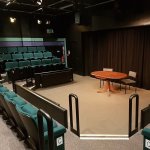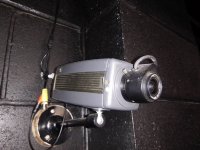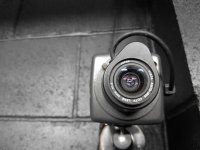- Messages
- 1,943
- Name
- Neil
- Edit My Images
- Yes
I've been holding off asking for advice on here for many months, but it's not been sorted, so here goes. I work (voluntary) in a small 100 seat theatre programming and running the lighting for plays and band performances. We have a very old poor quality colour camera covering the stage area so that we in the tech gallery (restricted view) can see what the audience sees on a small monitor. We are looking to upgrade this camera to one with a lot better image quality. As mentioned we need to see exactly what the audience sees so we don't want any led or infrared lighting built into this camera if the audience can only see gloom then that's what we want to see. We already have an infrared camera to see in the dark. We have tried setting up a small security camera that I use at home and turning off the illuminators but because of the very small sensor the image in gloom is too poor. We don't need to do any recording with this new setup. Can anyone come up with an idea of the route we should take? I am not the most technical guy at the theatre.
Attachments
Last edited:



